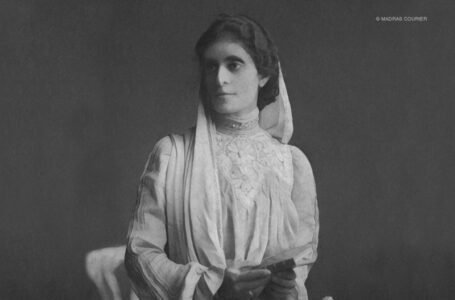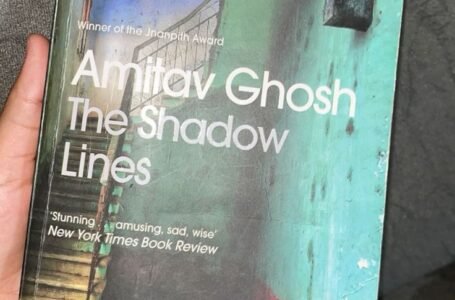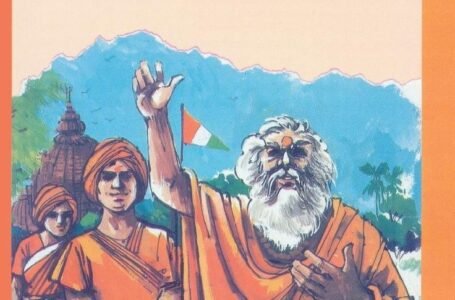Unraveling the Legacy of Thumri Gharanas
- Ancient history Asian history Lifestyle
 Shweta Toppo
Shweta Toppo- February 24, 2023
- 0
- 926

“Unraveling the Legacy of Thumri Gharanas”
INTRODUCTION
Thumri is a genre of semi-classical vocal music that originated in the North Indian subcontinent, with roots in the medieval poetry of the region. Thumri Gharana is a style or tradition within this genre that emerged in the 19th century and has since become a prominent school of performance.
Thumri Gharana is known for its intricate melodic and rhythmic patterns, delicate ornamentation, and emotive expressions. Its repertoire includes a range of themes, from love and devotion to nature and seasons, and often draws on the works of poets such as Mirza Ghalib and Meer Taqi Meer.

The practitioners of Thumri Gharana have developed a distinctive vocal style that is characterized by fluid, sinuous movements between notes, microtonal nuances, and a smooth, graceful approach to improvisation. They also make use of a range of vocal techniques such as meend, gamak, and murki to add depth and complexity to their performances.
Over time, Thumri Gharana has produced many legendary performers and continues to attract new enthusiasts and practitioners today. Its unique blend of classical and folk traditions, along with its focus on emotional expression and intimacy, has made it a beloved genre of music in India and beyond. and its focus on emotional expression and intimacy.

ORIGIN OF THUMRI GHARANA
The origin of Thumri Gharana can be traced back to the late 19th century in North India, particularly in the region of Awadh (present-day Uttar Pradesh). It was during this time that a number of musicians and poets began to explore the genre of thumri, which had traditionally been a light classical form of music associated with courtesans and tawaifs (female performers).
These early innovators, such as Nawab Wajid Ali Shah of Awadh, transformed thumri into a more refined and sophisticated art form, emphasizing its expressive and emotive qualities. They developed a new style of singing and improvisation that drew on both classical and folk traditions, and gradually, a distinct school of performance emerged, which came to be known as the Thumri Gharana.
The first generation of Thumri Gharana performers included artists such as Badi Moti Bai and Channulal Mishra, who continued to refine the style and expand its repertoire. They were followed by a second generation of musicians, such as Siddheshwari Devi and Rasoolan Bai, who popularized Thumri Gharana further and brought it to wider audiences through recordings and performances.

Today, Thumri Gharana continues to evolve and attract new practitioners, while maintaining its rich tradition and distinctive style. It remains an important part of India’s musical heritage and a beloved genre of music for audiences around the world.
LEADER OF THUMRI GHARANA
Thumri Gharana is a style of music rather than a formal institution, so there is no single leader or founder of the gharana in the traditional sense. However, there have been many great musicians who have contributed to the development and popularization of the Thumri Gharana over the years.

Some of the most prominent figures associated with the Thumri Gharana include Bade Ghulam Ali Khan, Siddheshwari Devi, Rasoolan Bai, and Girija Devi. Each of these musicians brought their unique style and interpretation to the genre, while also maintaining the core characteristics of the Thumri Gharana.
Bade Ghulam Ali Khan, for example, was known for his powerful voice and emotive singing style, while Siddheshwari Devi was known for her intricate ornamentation and skillful use of microtones. Rasoolan Bai, on the other hand, was known for her mastery of the Purab Ang thumri, which originated in eastern India
Girija Devi is often referred to as the “Queen of Thumri” for her extensive contributions to the genre. She was known for her versatility and ability to perform a wide range of thumris, from the romantic and melancholic to the playful and devotional. She also made significant contributions to the preservation and promotion of the Thumri Gharana through her teaching and mentoring of younger musicians.
Overall, the Thumri Gharana has been shaped and influenced by many great musicians over the years, and its legacy continues to evolve through the work of contemporary performers and enthusiasts.

TYPES OF THUMRI GHARANA
Thumri Gharana is a style of music that is known for its emotive and expressive qualities, as well as its use of intricate melodic and rhythmic patterns. There are several types of thumris within the Thumri Gharana, each with its own distinctive characteristics and themes. Some of the most common types of thumris include:
- Purab Ang Thumri: This type of thumri is characterized by its fast-paced tempo, lively rhythms, and emphasis on improvisation. It originated in eastern India and often draws on themes of love and separation.
- Poorab Ki Thumri: This is a slower and more contemplative type of thumri that is associated with the Awadh region of North India. It is often performed in a more classical style and emphasizes melodic ornamentation and expressive vocals.
- Punjab Ang Thumri: This type of thumri is associated with the Punjab region and is known for its use of folk melodies and rhythms. It often has a more upbeat and celebratory feel than other types of thumris.
- Banaras Ang Thumri: This type of thumri is closely associated with the city of Banaras (also known as Varanasi) and is known for its intricate ornamentation and use of complex rhythmic patterns.
- Kajri: This is a type of thumri that is associated with the monsoon season and often features themes of love and longing. It is characterized by its slow tempo and use of a distinctive “daadra” rhythm.
These are just a few examples of the types of thumris that are commonly associated with the Thumri Gharana. Each type has its own unique qualities and contributes to the rich and diverse heritage of this beloved genre of music.

FEATURES OF THUMRI GHARANA
Thumri Gharana is a style of music that is known for its emotive and expressive qualities, as well as its use of intricate melodic and rhythmic patterns. Some of the key features of the Thumri Gharana include:
- Emphasis on Vocal Ornamentation: Thumri Gharana is known for its use of vocal ornamentation, which includes melodic flourishes, slides, and other embellishments. These ornaments are used to express different emotions and add depth and texture to the music.
- Use of Microtones: Thumri Gharana utilizes a variety of microtones and subtle pitch variations, which add a unique character to the music. These microtones are used to create intricate melodic patterns and to convey different moods and emotions.
- Focus on Lyrics and Poetry: Thumri Gharana is known for its use of rich, evocative lyrics and poetry. The lyrics often draw on themes of love, separation, and devotion, and are an integral part of the music.
- Importance of Improvisation: Thumri Gharana places a high emphasis on improvisation, and musicians are expected to be able to improvise within the framework of the melody and rhythm. This allows for a high degree of creativity and spontaneity in the music.
- Rhythmic Complexity: Thumri Gharana utilizes a variety of complex rhythms, including the daadra, keherwa, and tivra. These rhythms add depth and texture to the music and are an important part of the improvisational process.
- Integration of Folk and Classical Elements: Thumri Gharana draws on both folk and classical elements, which gives it a unique character and broad appeal. The music often incorporates traditional melodies and rhythms from different regions of India, as well as classical techniques and structures.

Overall, the Thumri Gharana is known for its rich, emotive, and expressive qualities, as well as its emphasis on improvisation and vocal ornamentation. These features have helped make it one of the most beloved and enduring genres of music in India.
FAMOUS ARTIST OF THUMRI GHARANA
There has been many renowned artists who have contributed to the development and popularity of the Thumri Gharana over the years. Some of the famous artists of Thumri Gharana are:
- Badi Motibai: Badi Motibai was a legendary singer of Thumri Gharana, born in Varanasi in 1869. She was the daughter of a famous musician, Appa Jalgaonkar, and was trained in the traditional style of thumri by her father. Badi Motibai is known for her soulful and emotive singing style and is considered one of the pioneers of Thumri Gharana.
- Siddheshwari Devi: Siddheshwari Devi was a famous singer of Thumri Gharana and was born in Varanasi in 1902. She was trained by her mother, who was also a singer of the same genre. Siddheshwari Devi’s music was characterized by her unique voice and her ability to convey the emotions of the lyrics through her singing.
- Girija Devi: Girija Devi was a renowned classical singer of Thumri Gharana, born in Varanasi in 1929. She was trained in the thumri style by her mother and also learned other forms of classical music. Girija Devi was known for her powerful and expressive voice and her ability to improvise and innovate within the thumri style.
- Shobha Gurtu: Shobha Gurtu was a popular Thumri singer born in Belgaum in 1925. She started her musical journey with film songs and gradually moved to semi-classical and classical music. Shobha Gurtu’s thumris were characterized by her unique voice, her ability to express complex emotions, and her use of improvisation.
- Parveen Sultana: Parveen Sultana is a renowned classical singer of Thumri Gharana, born in Assam in 1950. She is known for her powerful and emotive voice, hability to convey complex emotions through her singing, and nnovative approach to the thumri style.

These artists have made significant contributions to the development and popularization of Thumri Gharana and have inspired many other singers to take up this beautiful genre of music.
CURRENT SCENARIO
Thumri Gharana is still a vibrant and much-revered genre of music in India. Though its popularity may have waned a bit in recent years, there are still many dedicated artists who are keeping the tradition alive and helping to bring it to new audiences.
In contemporary times, some popular Thumri singers are Kaushiki Chakraborty, Ajoy Chakraborty, Ritesh Mishra, Soma Ghosh, and Rajan and Sajan Mishra, among others. These artists have been able to infuse new energy into the genre while still maintaining its rich traditions and nuances.
Moreover, various music festivals across India, including the annual Tansen Samaroh in Gwalior, the Saptak Music Festival in Ahmedabad, and the Dover Lane Music Conference in Kolkata, feature Thumri performances by eminent artists.
In recent times, there has been an increasing trend of fusion of Thumri with other musical genres, such as jazz, pop, and electronic music. This has helped to bring the genre to newer audiences and has helped to create a new and contemporary sound for the traditional Thumri.
Overall, Thumri Gharana remains an important and beloved genre of music in India, and its rich history and tradition continue to inspire and influence new generations of musicians.

CONCLUSION
Thumri Gharana is a distinctive style of Hindustani classical music that originated in the region of Uttar Pradesh in North India. The gharana is known for its emotive and expressive style, characterized by fluid and ornamental melodies, intricate rhythms, and lyrical improvisation.
Thumri Gharana has a rich history, with many legendary musicians and composers who have contributed to its development and evolution over the years. Some of the most renowned musicians of the gharana include Begum Akhtar, Rasoolan Bai, Badi Moti Bai, Girija Devi, and Siddheshwari Devi.
Today, Thumri Gharana continues to thrive, with a new generation of talented musicians and performers carrying on the tradition and taking it in new directions. The gharana has also influenced and been influenced by other musical traditions, including ghazals, bhajans, and film music.

In conclusion, Thumri Gharana is a significant and vibrant part of the rich cultural heritage of India, and its unique style and artistic expression continue to captivate and inspire audiences around the world.



